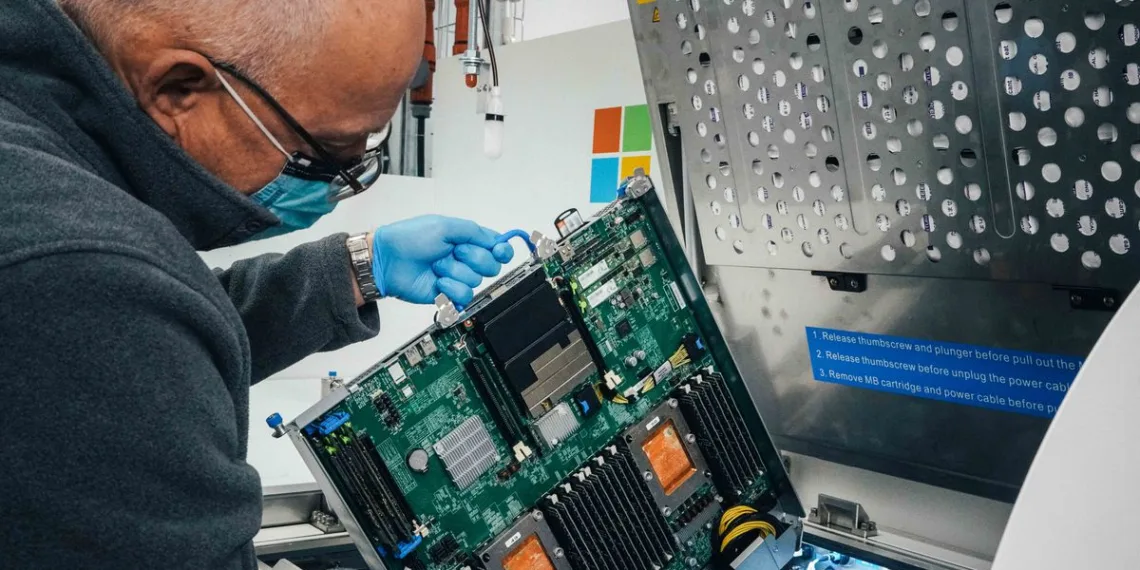According to sources, Microsoft is conducting yet another weird experiment with its Servers. It started testing its servers by submerging them in liquid to improve their performance and energy efficiency. The company dipping its servers in what looks like a liquid bath.
Even though this particular immersion process has existed in the industry for a few years now, but Microsoft claims it’s “the first cloud provider that is running two-phase immersion cooling in a production environment.”
To cool the servers, they are completely submerged in a specially designed non-conductive fluid. The fluorocarbon-based liquid removes heat as it directly hits components and the fluid reaches a lower boiling point (122 degrees Fahrenheit or 50 degrees Celsius) to condense and fall back into the bath as a raining liquid. All this creates a closed-loop cooling system, reducing costs as no energy is needed to move the liquid around the tank.
According to Christian Belady, vice president of Microsoft’s data center advanced development group, “It’s essentially a bathtub. The rack will lie down inside that bathtub, and what you’ll see is boiling just like you’d see boiling in your pot. The boiling in your pot is at 100 degrees Celsius, and in this case, it’s at 50 degrees Celsius.”
Cryptominers have used a similar type of liquid cooling to mine for bitcoin and other cryptocurrencies. Microsoft was inspired by the efficiency of such a system to mine vigorously for several hours.
A common practice in most data centers today, is to use outside air and cooling it by dropping it to temperatures below 35 degrees Celsius using evaporation. This is known as swamp cooling, but it uses a lot of water in the process.
“It potentially will eliminate the need for water consumption in data centers, so that’s a really important thing for us. It’s all about driving less and lower impact for wherever we land.”
Microsoft states that it is going to study the reliability implications of this new cooling and what types of burst workloads it could even help with for cloud and AI demand.
“We expect much better reliability. Our work with the Project Natick program a few years back demonstrated the importance of eliminating humidity and oxygen from an environment.”








